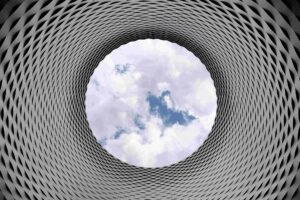STEAM Ahead into 2012
I was recently privileged to attend a very small conference in my hometown put on by American Conference of Academic Deans and Phi Beta Kappa. There were only about 150 attendees, making it possible to really speak with a lot of people in depth about their ideas and research. The conference was titled, “Are the humanities now a luxury?” which most of us attending found ourselves translating to “Are the humanities dead?” I find this a fascinating question as I have some pretty strong opinions about keeping the humanities alive.
Lately, in education circles, STEM—the teaching of science, technology, engineering, and mathematics—has been gathering steam, from the publication by the AAUW of their recent report on the still lagging participation of women in science that must be addressed at the El-Hi level to improve at the college level, and the $250 million public-private initiative announce by President Obama to recruit and train more STEM teachers. In addition to that, the US Department of Education also announced that it would provide “bonus points” in the Race to the Top Fund for applications that stress STEM instruction.
While I am not opposed to the roughly $700 million the Federal Government spends on SYEM education through the National Aeronautics and Space Administration (NASA), the National Science Foundation (NSF), and other federal government entities I fundamentally embrace the idea that the arts have a role in science as well. So for me it was a wonderful revelation to hear that some folks are discussing the replacement of the acronym STEM with, you guessed it, STEAM to incorporate the word Arts into this discussion of the appropriate direction for education to take.
Although I have not been able to discover who coined the new acronym, I heartily applaud its use. “Art may be a necessary condition for constructing the new consciousness from which future science gets its structural realities to match nature, in which case it is more important than we generally admit,” wrote Robert Mueller in The Science of Art all the way back in 1967. Some of my personal favorite poets incorporate scientific discovery into their work, such as Al Zolynas, The New Physics; Anne Michaels, The Weight of Oranges; and Marge Piercy, The Moon Is Always Female. Read their interpretations of scientific discovery, and I promise you will be changed.
The there is the recent death from stroke of Lynn Margulis (1938-2011). She was originally considered a cranky woman with a ridiculous idea, that the eukaryotic cell (the more complex cell with a nucleus and other parts, organelles) is not something that evolved on its own, but the result of a simpler (prokaryotic) cell incorporating other such cells. She had 15 rejections before her seminal paper was finally accepted in 1967, scientist being more conservative than one might suppose. 15 years after that, her ideas were validated once it was possible to show through DNA molecular analysis that the DNA of the organelles is virtually the same as the DNA of free-standing prokaryotes. She was one of the original proponents of “the Gaia hypothesis,” that the Earth taken as a whole is a living organism, still a contentious idea. She was lambasted by Richard Dawkins, author of The Selfish Gene and The Extended Phenotype, and others in the scientific community. Yet the idea has grown in popularity, and there are scientists and well as the general public embracing the idea.
In the discipline of anthropology, there is a new exhibit of Ethnographic Terminalia, a curatorial collective of six anthropologists who mount one exhibition per year, timed to coincide with the American Anthropological Association’s annual meeting in Montreal, Canada. Curators Kate Hennessy, Assistant Professor at Simon Fraser University’s School of Interactive Arts & Technology, says it is all about creating a dialogue: it seems, is the current running through it all – what makes every piece selected a work of art and of anthropology between what is seen in the gallery and what is done in the field, in typical anthropological self-reflexivity. One example: an exhibit titled “Making Sense: Lab as Gallery as Field,” where two young men tried to figure out what they should be doing with a computer, petri dishes, some homespun gadgetry and circuitry work, and what turned out to be a spectrometer.
Closer to home is a project by Bill Manaris, professor of computer science at the College of Charleston, with the design of the Monterey Mirror, allowing musicians to interact with computers, akin to Apple’s Garage Band. The project is specifically designed to merge “Computer Science and the Arts,” and the college launched a new program by the same name this past fall that already has 30 students enrolled.
All and all, I consider these developments not only beneficial to the humanities as a discipline, but actually favorable to the development of all the academic disciplines. It’s time we rediscovered the role of imagination and Imagineers (to borrow from Disney) in the road to the production of knowledge.
Tags: American Conference of Academic Deans, Bill Manaris, Lynn Margulis, Monterey Mirror, Phi Beta Kappa, STEAM, STEM








